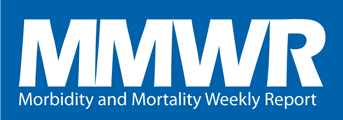MMWR News Synopsis for April 16, 2015
Measles — United States, January 4–April 2, 2015
CDC Media Relations
404-639-3286
Maintenance of high MMR vaccination coverage, ensuring timely vaccination before travel, and early detection and isolation of cases, are key factors to limit importations and spread of measles. During January 4 – April 2, 2015, a total of 159 measles cases (155 U.S. residents, 4 foreign visitors) were reported to the CDC. Over 80% of all cases occurred among individuals who were unvaccinated or had an unknown vaccination status. One outbreak accounted for 70% of all measles cases this year. Importations of measles into communities with unvaccinated persons can lead to measles cases and outbreaks in the United States.
Tobacco Use Among Middle and High School Students — United States, 2011–2014
CDC Media Relations
404-639-3286
Because the use of e-cigarettes and hookahs is on the rise among high and middle school students, it is critical that comprehensive tobacco control and prevention strategies for youth focus on all tobacco products, not just cigarettes. Current e-cigarette use among middle and high school students tripled from 2013 to 2014. Findings from the 2014 National Youth Tobacco Survey show that current e-cigarette use among high school students increased from 4.5% in 2013 to 13.4% in 2014. Among middle school students, current e-cigarette use more than tripled from 1.1% in 2013 to 3.9% in 2014. Increases were also observed for current hookah use, almost doubling for high school students from 5.2% to 9.4% and for middle school students from 1.1% to 2.5% over this same period. This is the first time since the survey started collecting data on e-cigarettes in 2011 that current e-cigarette use has surpassed current use of every other tobacco product, including conventional cigarettes.
Ebola Transmission Linked to a Single Traditional Funeral Ceremony — Kissidougou, Guinea, December, 2014–January 2015
CDC Media Relations
404-639-3286
Hygienic burial of corpses infected with Ebola and community acceptance of culturally sensitive safe burial practices are important components of successful management and prevention of Ebola. During December 1, 2014 ─ January 10, 2015, the Guinean Ministry of Health requested assistance from CDC, the World Health Organization, and other partners to investigate an Ebola outbreak in Kissidougou, a prefecture in southeastern Guinea where Ebola was first reported in West Africa in March of 2014. Interventions included active identification and isolation of cases, assessing transmission chains, and implementation of control measures. Lessons learned from this outbreak were employed in planning for subsequent outbreaks in rural communities, developing improved protocols for safe burial practices, and creating health-communication messages in local languages.
Invasive Cancer Incidence — Puerto Rico, 2007–2011
CDC Media Relations
404-639-3286
Puerto Rico has lower rates of new cases of lung and female breast cancer than the rest of U.S. In 2011, newly diagnosed cancer rates in Puerto Rico were lower for lung and bronchus, female breast, and all cancer sites overall compared to groups of people in the United States. In Puerto Rico, the sites of the body with the highest numbers of newly diagnosed cancer cases were prostate, female breast, lung and bronchus, and colorectal cancer during 2007-2011. These data are based on United States Cancer Statistics, the official annual federal government statistics on cancer incidence, available at www.cdc.gov/uscs.
Assessment of Epidemiology Capacity in State Health Departments — United States, 2013
Council of State and Territorial Epidemiologists (CSTE)
Chad McCoull
770.458.3811
cmccoull@cste.org
States’ ability to produce scientific data essential to public health relies on their epidemiology capacity. Despite improvements, many states have major gaps in the epidemiology capacity needed in important public health areas including occupational health, oral health, substance abuse, and mental health. Epidemiology provides the scientific foundation for public health. The 2013 Epidemiology Capacity Assessment conducted by the Council of State and Territorial Epidemiologists (CSTE) found that state-level epidemiology capacity to conduct surveillance, perform investigations, and evaluate public health programs has improved markedly since its low point in 2009, coincident with increases in federal funding and the size of the state-level public health epidemiology workforce. Despite the improvements, >50% of states reported minimal-to-no epidemiology capacity in occupational health, oral health, substance abuse, and mental health. Most health departments still lack critical technology capacity. CSTE recommends that state, federal and local agencies work together to address the major gaps including developing a consensus on optimal capacity in these areas and developing a strategy to achieve them.
Poisoning Deaths Involving Opioid Analgesics — New York, 2003 – 2012
The New York State Department of Health Public Affairs Group
518-474-7354 ext. 1.
press@health.ny.gov
The increase in opioid-analgesics-related mortality across all demographic categories is a serious public health threat in New York State, as it is in the rest of the nation. Statewide efforts are needed to prevent the abuse of prescription medications. As in the United States as a whole, deaths involving opioid analgesics in New York state have dramatically increased over the last decade, from 179 deaths (0.93 per 100,000) in 2003 to 883 (4.51 per 100,000) in 2012. Rates of deaths involving opioid analgesics increased among all groups examined and were consistently highest among men, whites, those ages 45-64 years, and Medicaid enrollees. Multiple drug involvement is characteristic of these deaths. In 2012, 70.7% of deaths involving opioid analgesics also involved at least one other drug, most frequently a benzodiazepine.
Notes from the Field:
Campylobacteriosis Outbreak Associated with Consuming Undercooked Chicken Liver Pâté — Ohio and Oregon, December 2013–January 2014
Infant Botulism Caused by Clostridium baratii Type F — Iowa, 2013
###

